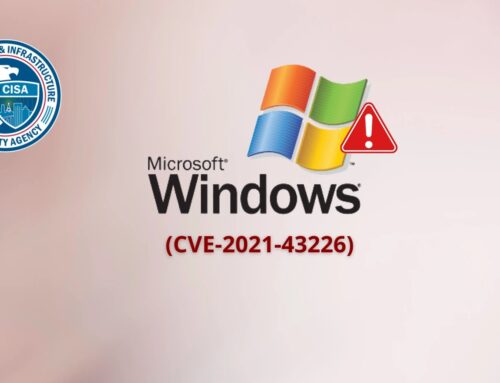
OpenSSH Vulnerability Exploited Via ProxyCommand to Execute Remote Code – PoC Released
A critical new command injection vulnerability in OpenSSH has been disclosed, enabling remote code execution and posing a significant threat to countless systems worldwide. This exploit, tracked as CVE-2025-61984, bypasses previous security measures and highlights the persistent challenge of securing complex software integrations. Understanding this vulnerability is crucial for every system administrator and security professional.
Understanding CVE-2025-61984: The OpenSSH ProxyCommand Vulnerability
The recently identified vulnerability, CVE-2025-61984, represents a serious command injection flaw within OpenSSH. Specifically, it exploits how the ProxyCommand feature interacts with the underlying system shell. This is particularly concerning because it allows an attacker to execute arbitrary commands on a vulnerable machine, effectively achieving remote code execution (RCE).
This isn’t an entirely new class of vulnerability; CVE-2025-61984 is reported to be a bypass for a previous fix related to a similar issue, CVE-2023-51385. This indicates that the fundamental way OpenSSH processes external commands via ProxyCommand contains inherent risks that are challenging to fully mitigate.
How ProxyCommand Facilitates Exploitation
The ProxyCommand option in OpenSSH allows users to specify an external command to connect to a target host through an intermediate proxy. While incredibly flexible and powerful for navigating complex network topologies, this flexibility introduces a security perimeter that, if improperly managed, can be exploited.
The vulnerability arises when specially crafted input is supplied to the ProxyCommand, tricking the shell that executes the command into interpreting parts of the input as new commands rather than arguments. This “command injection” allows an attacker to break out of the intended command context and execute arbitrary system commands with the privileges of the SSH client process.
Proof-of-Concept (PoC) Availability and Increased Risk
The release of a Proof-of-Concept (PoC) exploit code significantly escalates the risk associated with CVE-2025-61984. With a PoC available, even less skilled attackers can potentially leverage this vulnerability, widening the attack surface for many organizations. The speed at which attackers can weaponize such information necessitates immediate action from all affected parties.
Remediation Actions for CVE-2025-61984
Addressing CVE-2025-61984 requires prompt and thorough remediation. System administrators and cybersecurity teams should prioritize these actions:
- Apply Patches Immediately: Monitor official OpenSSH project announcements and vendor security advisories for patches addressing CVE-2025-61984. Apply these updates as soon as they become available.
- Review and Restrict ProxyCommand Usage:
- Audit all OpenSSH configurations (
~/.ssh/config,/etc/ssh/ssh_config,/etc/ssh/sshd_config) for instances ofProxyCommand. - Limit the use of
ProxyCommandto only trusted, essential scenarios. - Ensure that any custom scripts or commands executed via
ProxyCommandare thoroughly vetted and sanitize all user-supplied input to prevent command injection. - Consider replacing complex
ProxyCommandsetups with more secure alternatives likeOpenSSH Jump HostsorProxyJump(if your OpenSSH version supports it and it meets your requirements, as it’s generally safer).
- Audit all OpenSSH configurations (
- Implement Principle of Least Privilege: Ensure that the user accounts executing SSH commands (and thus potentially vulnerable
ProxyCommanddirectives) operate with the absolute minimum necessary privileges. - Monitor SSH Logs: Enhance monitoring for unusual SSH connection attempts, failed logins, or suspicious command executions originating from or targeting systems that commonly use
ProxyCommand. - Security Awareness: Educate users and developers about the risks associated with dynamic command execution within SSH configurations and the importance of secure coding practices for custom scripts.
Recommended Tools for Detection and Mitigation
Leveraging appropriate tools can significantly aid in identifying and mitigating the risks associated with this OpenSSH vulnerability.
| Tool Name | Purpose | Link |
|---|---|---|
| OpenSSH Updates | Official patches and updated versions for OpenSSH | https://www.openssh.com/ |
| Vulnerability Scanners (e.g., Nessus, OpenVAS) | Automated scanning for known vulnerabilities, including CVEs on installed software | https://www.tenable.com/products/nessus https://www.greenbone.net/en/ |
| Configuration Management Tools (e.g., Ansible, Puppet) | Audit and enforce secure SSH configurations across multiple systems | https://www.ansible.com/ https://puppet.com/ |
| OSSEC / Wazuh | Host-based Intrusion Detection System (HIDS) for monitoring SSH logs and command execution | https://www.ossec.net/ https://wazuh.com/ |
Conclusion
The disclosure of CVE-2025-61984, an OpenSSH command injection vulnerability exploitable via ProxyCommand, underscores a critical security challenge. With a PoC available, the potential for remote code execution is immediate and severe. System administrators must prioritize patching OpenSSH, rigorously review ProxyCommand configurations, and implement enhanced security monitoring to protect their infrastructure from this significant threat.





